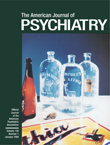The Genetics of Alcoholism
This book is the first volume in a new series, Alcohol and Alcoholism, which is related to the editors’ first series, The Biology of Alcoholism. This new series will consist of nine volumes, each with a specific topic. This volume, on the genetics of alcoholism, is the first of four dealing with basic theoretical and experimental issues in alcohol and alcoholism research.
The volume is organized into three main sections. Part 1 includes epidemiologic studies. Victor Hesselbrock, in his chapter on the genetic epidemiology of alcoholism (chapter 1), reviews the various familial-genetic studies, including twin studies and adoption studies. Michie Hesselbrock, in chapter 2, describes the genetic determinants of alcoholic subtypes. I found the third chapter, “Familial Transmission of Psychiatric Disorders Associated With Alcoholism,” very interesting. Remi Cadoret concisely analyzes the pertinent literature to date. Other chapters in this section include Andrew Heath’s very thorough review of the genetic influences on drinking behavior in humans (chapter 4) and James Wilson and Elizabeth Laffan’s chapter on testing for genetic influences on alcohol metabolism, sensitivity, and tolerance (chapter 5).
Part 2, Selective Breeding Studies, focuses on the current knowledge that the animal studies have contributed to the field. These basic science studies may not have immediate applicability to clinical work; however, it is through these studies that factors influencing alcohol consumption and alcoholism have been identified. Richard Deitrich and Rodney Baker, in chapter 6, review the genetic influences on alcohol metabolism and sensitivity to alcohol in animals. In the next chapter, David Crabb et al. describe genetic factors that reduce the risk for developing alcoholism in animals and humans. They discuss the enzymology of alcohol-metabolizing systems, with one focus on the Asian alcohol flush reaction. Ann Kosobud and John Crabbe end this section with their chapter on the genetic influences on the development of physical dependence and withdrawal in animals.
The first chapter in the last section of this volume, Phenotypic Studies, is a brief summation of the biochemical phenotypic markers in genetic alcoholism, presented by Ivan Diamond and Adrienne Gordon. In chapter 10, Henri Begleiter and Bernice Porjesz review the major neurophysiological phenotypic factors. This chapter is a good introduction to the field. They describe the confounding features of alcoholism, which make it difficult to identify specific genes, and the specific criteria critical for identifying a genetically influenced marker. They then discuss the pertinent findings from selected EEG and event-related brain potential studies. In chapter 12, Ralph Tarter et al. describe the studies in behavioral genetics that look to elucidate the etiology of alcoholism. Tarter presents the results from his well-known work, along with other studies looking at temperament associated with a greater risk for alcoholism. As a child psychiatrist who works with children of substance-abusing parents, I found this chapter very compelling. Gerald McClearn and Robert Plomin, in chapter 13, discuss various research strategies for the search for genetic influences on the phenotypes described in previous chapters. They stress the need for quantitative genetic research in this field. In the final chapter, Alexander Wilson and Robert Elston explain linkage analysis and review the linkage analysis research of alcoholism.
This volume is a strong start in this new series. It is a well-organized, well-written volume that can be used as an up-to-date reference. I look forward to future volumes in this series.



